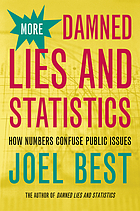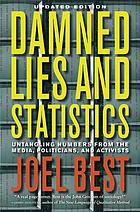Data literacy is the ability to understand data and data practices sufficiently to meaningfully interpret data and effectively communicate that meaning. As such, it involves understanding where data came from, how to draw meaning or conclusions from it, how to read charts appropriately and make inferences from visualizations, and how to recognize when data are being used to mislead. Data literacy is inclusive of a broad range of data skills including data management, cleaning, analysis, and visualization. Most importantly it requires understanding the meaning of data, how it fits into a broader context, and what conclusions can and can’t be derived from that data.
quoted from NIH: National Library of Medicine
It is essential to understand:
"what good data and data analysis is so that you can make stronger arguments and better evaluate the arguments of others. It’s important to realize that everyone has an agenda of some sort, and being more data literate helps you understand if others are making a fair argument. Part of being able to take a more informed (some might say skeptical) view of data is being literate in how data are manipulated and subsequently presented: how they are collected, made into tables, and shown in pictures or graphs. Once you know how to do this the right way .... you can start asking if someone else is doing it in a way that is fair, or if they are distorting the data for their own purposes."
Adapted bullet points and quote are from: Bowen, M., & Bartley, A. (2013). The Basics of Data Literacy : Helping Your Students (and You!) Make Sense of Data.
(credit to Fontichiaro & Oehrli. "Why Data Literacy Matters")
Note that data and statistics are not the same thing. Data refers to information that has not yet been interpreted or processed in any way, while statistics are data that have been numerically analyzed.
The following concepts are excerpted from Data Cadre, Nebraska Department of Education and Educational Service Unit
Additional Terminology:
Try asking and answering the following questions:
Questions are adapted from and added to: Emma Smith, Using Secondary Data in Educational and Social Research (New York: McGraw Hill/Open University Press, 2008) and Tulane University Library
From the introduction to Joel Best's Damned Lies and Statistics:
There are three basic questions that deserve to be asked whenever we encounter a new statistic.
Who created this statistic? Every statistic has its authors, its creators. Sometimes a number comes from a particular individual. On other occasions, large organizations (such as the Bureau of the Census) claim authorship (although each statistic undoubtedly reflects the work of particular people within the organization). In asking who the creators are, we ought to be less concerned with the names of the particular individuals who produced a number than with their part in the public drama about statistics. Does a particular statistic come from activists, who are striving to draw attention to and arouse concern about a social problem? Is the number being reported by the media in an effort to prove that this problem is newsworthy? Or does the figure come from officials, bureaucrats who routinely keep track of some social phenomenon, and who may not have much stake in what the numbers show?
Why was this statistic created? The identities of the people who create statistics are often clues to their motives. In general, activists seek to promote their causes, to draw attention to social problems. Therefore, we can suspect that they will favor large numbers, be more likely to produce them and less likely to view them critically...We need to be aware that the people who produce statistics often care what the numbers show, they use numbers as tools of persuasion.
How was this statistic created? We should not discount a statistic simply because its creators have a point of view, because they view a social problem as more or less serious. Rather, we need to ask how they arrived at the statistic. All statistics are imperfect, but some are far less perfect than others. There is a big difference between a number produced by a wild guess, and one generated through carefully designed research. This is the key question. Once we understand that all social statistics are created by someone, and that everyone who creates social statistics wants to prove something (even if that is only that they are careful, reliable, and unbiased), it becomes clear that the methods of creating statistics are key.
NY Times April 6, 2022: "Caviar and Canned Tuna: Top Fed Official Points out Income-based Inflation Gaps"
This news article raises two important points about the necessity of context to understand data.
(click on image to enlarge)
Following the death of Michael Brown at the hands of Ferguson, MO police in 2014, there was a demand from many sectors of society for information on police use of force and killings of civilians. This data was not available from any governmental office.
"How are people supposed to fix something that hadn't been properly counted?" The director of the FBI, James Comey, acknowledged as much in this 2016 speech... 'We simply don't know. As a country, we have not bothered to collect the data, to collect the information. And in the absence of information, we have anecdotes. We have videos.'" (NPR March 2, 2022)
In 2015, the FBI committed to gathering information from police departments on use of force against civilians. The FBI began collecting data from law enforcement agencies on January 1, 2019. Providing the data is voluntary and in the first two years of the program, the FBI has not met the minimum threshold of 60% participation by police departments that would enable them to publish the data. They will release some general information on trends.
"In 2021, 44 out of 302 agencies in Washington participated and provided use-of-force data. The officers employed by these agencies represent 51% of sworn law enforcement officers in the state." (from Crime Explorer)
In 2015 the Washington Post launched their own research specifically on police shootings and killings of civilians. They have shared data with the public since 2015.
Data collected by the Washington Post includes only fatal shootings by police. The data is disaggregated, or broken down, by the race of the victim, the circumstances of the killing, whether the person was armed, if they were experiencing a mental health crisis, and other factors.
 More Damned Lies and Statistics: How Numbers Confuse Public Issues
by
More Damned Lies and Statistics: How Numbers Confuse Public Issues
by
 Damned Lies and Statistics: Untangling Numbers from the Media, Politicians, and Activists
by
Damned Lies and Statistics: Untangling Numbers from the Media, Politicians, and Activists
by
 Everybody Lies: Big Data, New Data, and What the Internet can Tell Us about Who We really are
by
Everybody Lies: Big Data, New Data, and What the Internet can Tell Us about Who We really are
by
This case study centers on a research study published in Science Advances in April 2021. The abstract for the study states:
"People of Color Hardest Hit by Air Pollution from Nearly All Sources," published in UW News April 28. The news article notes that one of the study co-authors is a UW professor.
The UW article contextualizes the report with quotes on the subject from several of the study's co-authors and links out to their web pages.
For example, co-author Julian Marshall situates this one study within the larger social context of systemic racism.
The WA Post article contextualizes and interprets the research study in a number of ways:
This news article from the EPA (the federal government's Environmental Protection Agency) contextualizes the research study with some different facts.
Referenced in WA Post story:
Other Sources: